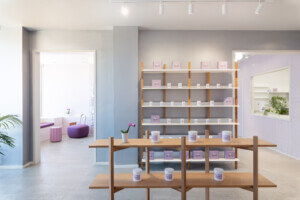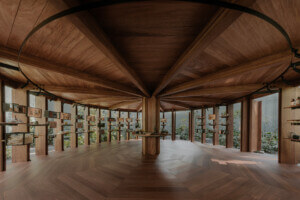Retail is dead. Long live retail. With the ubiquity of online shopping, brick-and-mortar retail has become more competitive. Good deals and low prices aren’t enough to draw customers into stores anymore; today’s customers are looking for experiences, according to developers and retail prognosticators. Canadian outdoor goods retailer Mountain Equipment Co-op (MEC) has teamed up with creative technology from Finger Food to offer an in-store—or in-home—experience that bridges the digital and the physical: augmented reality tent shopping.
“Retail has gone through significant disruption and it’s only going to get faster,” said David Labistour, CEO of MEC. The outdoor company sees this disruption as a unique opportunity for growth. MEC offers more tents than can fit in their stores. Rather than hanging excess tents from the ceiling, MEC asked Finger Food to develop an application that would allow customers using a phone, tablet, or AR/VR goggles to see and explore a full-scale, fully rendered (inside and out) 3D version of every single tent that MEC sells. What’s special about this particular use of the increasingly common AR technology is the unprecedented level of detail Finger Food was able to achieve.
Finger Food create their ultra-realistic 3d models in an enormous room they call the holodeck — named after the high-tech virtual reality rooms in Star Trek. Using a proprietary photogrammetry rig and accompanying software, the company can take thousands of photos of any object to capture its geometries and textures at extremely high resolution. In addition to the realism, Finger Food’s solution is distinguished by its speed—scanning an object requires less than an hour, compared to days that could be spent creating a 3D model from scratch—and the system has proven its capability to capture objects of any scale, from a pair of sunglasses to a semi-truck.
Their work for MEC isn’t Finger Food’s first foray into the retail space. The group has previously worked with Lowe’s home improvement stores to develop two augmented reality apps. One lets users see what products look like in their homes—everything from accent tile to a six-burner stove—and easily make a purchase afterward. The other app guides users through Lowe’s 1000,000-square-foot stores to find the exact products they’re looking for; it also notifies employees when an item needs restocking.
Customers can currently use the AR application at MEC’s flagship Toronto store, with a larger rollout planned. “We believe the future of the customer experience will be significantly changed through the integration of technology,” said Labistour. If these technologies prove successful, the retail experience and store design could be changed as well. In a future with augmented reality and next-day delivery, less space may be needed in stores as fewer items would be kept on display and in stock.











